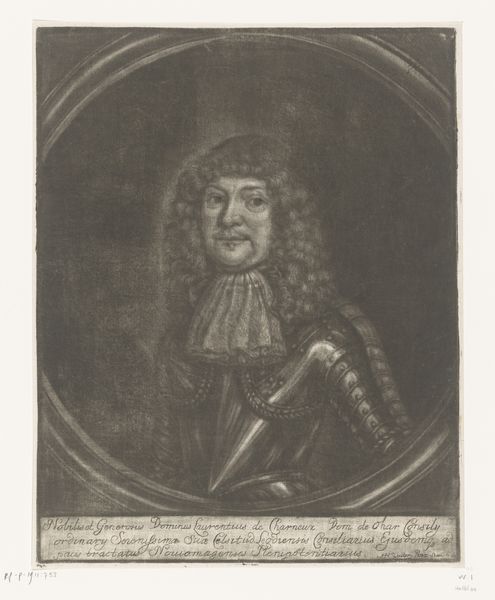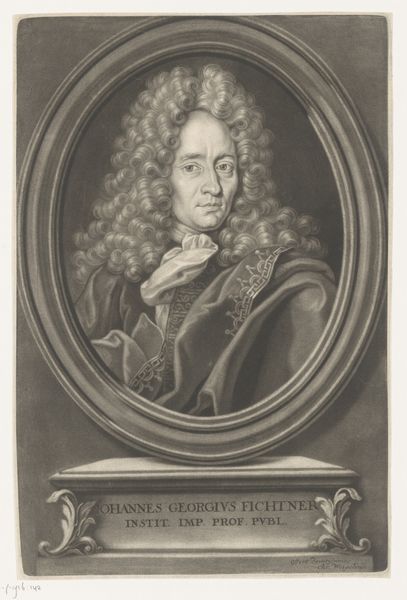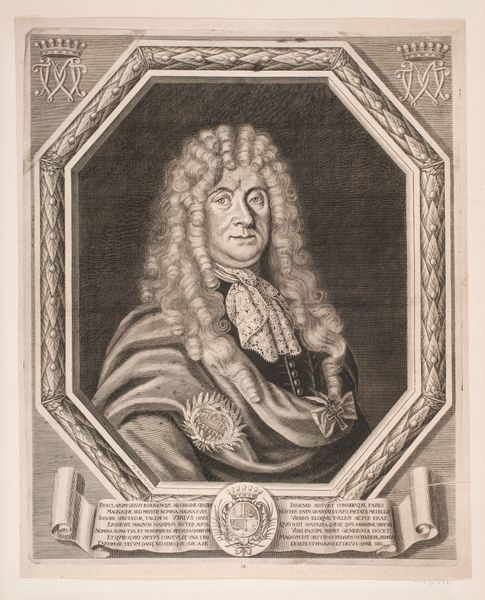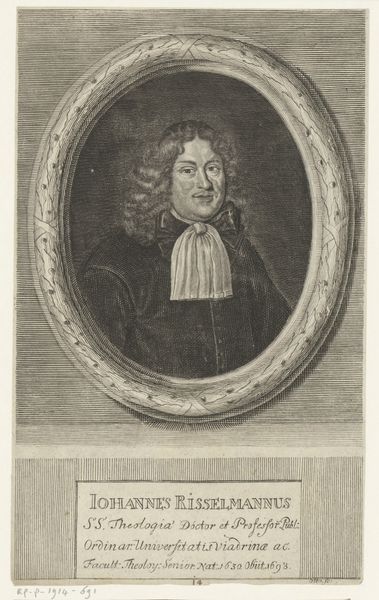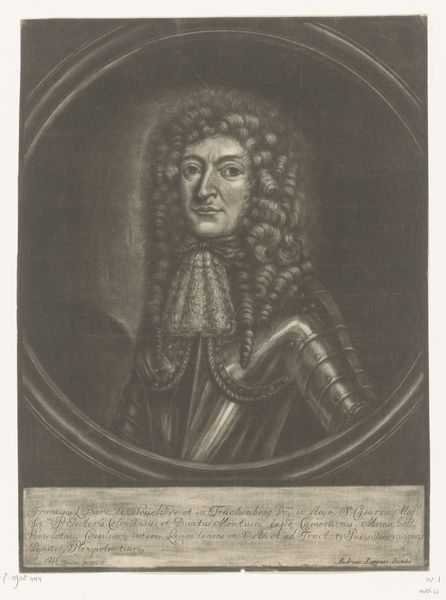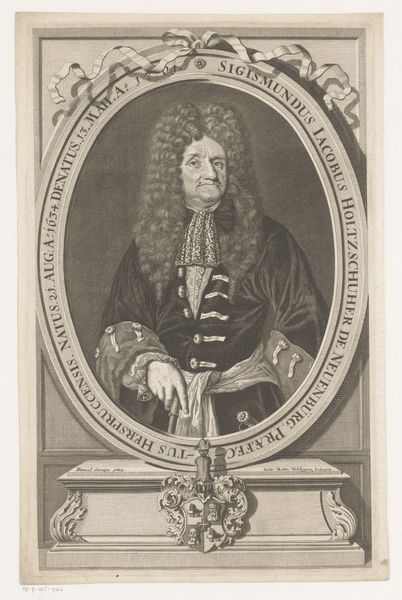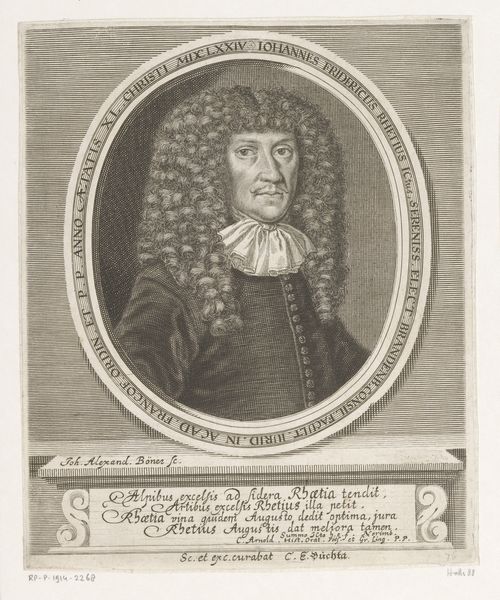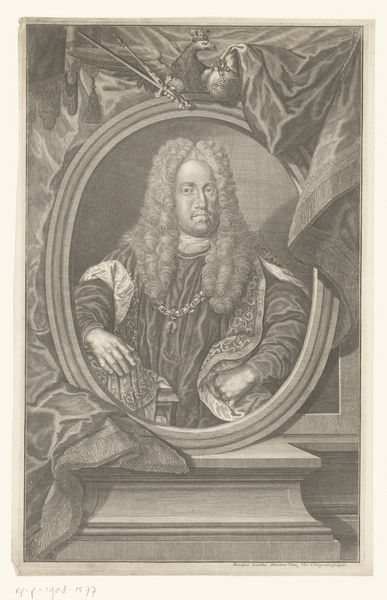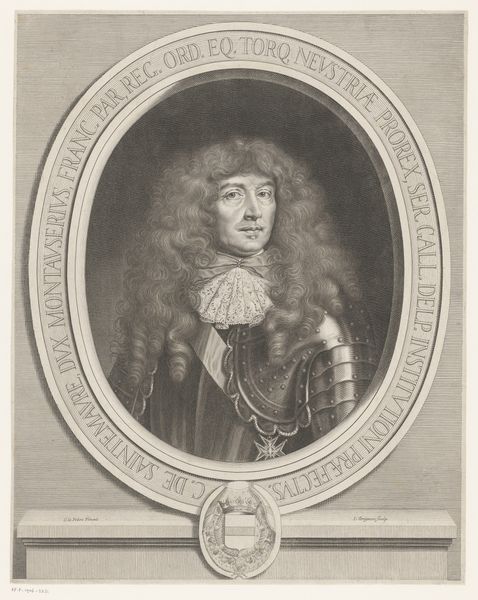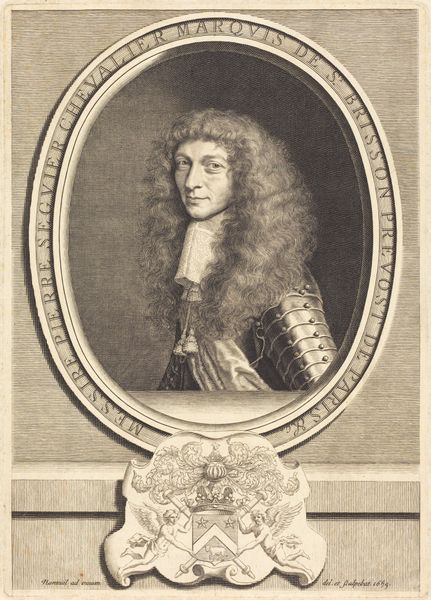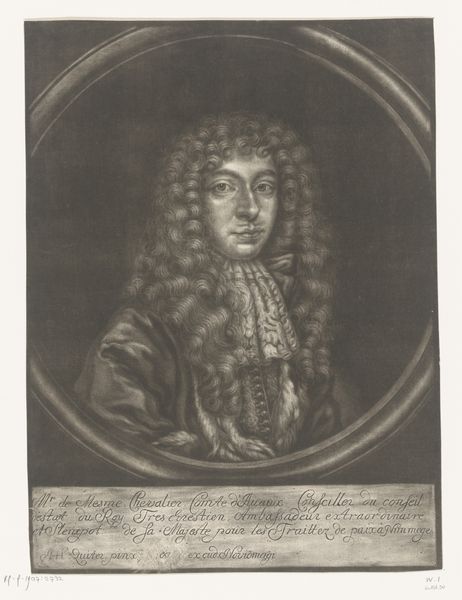
print, engraving
#
portrait
#
baroque
# print
#
engraving
Dimensions: height 171 mm, width 101 mm
Copyright: Rijks Museum: Open Domain
Curator: Here we have a portrait of Johann Ludwig Hauenreuter, created in 1618 by Jacob van der Heyden. The artwork employs engraving, falling within the broader Baroque style. Editor: There's an almost theatrical formality about it, don’t you think? The detail in his hair is quite striking, and the ruff around his neck seems intentionally stiff, perhaps symbolizing something about status and the constraints of identity. Curator: Indeed. Engravings like this one served important functions in early modern society. Consider how prints facilitated the dissemination of images, contributing to the formation of public image. Figures such as Hauenreuter used them to solidify their positions. Editor: It speaks to how representation, even then, was deliberately crafted. Looking at the lines and texture, you get a sense of controlled chaos. The rigid oval contrasts the soft, almost flamboyant, curls. It hints at tensions between personal expression and societal expectations, doesn't it? Curator: I agree. It's tempting to delve into the symbolism within the man's clothing and overall presentation. The quality and elaborateness served to proclaim social standing in a society acutely aware of these signs. It communicates ambition and a self-aware dedication to decorum. Editor: Yes, decorum—which then intersects with ideas around gender, power, and how masculinity was performed. He is a man, undoubtedly in a position of authority. Who were the prints designed for and were those exclusively a male demographic, too? Curator: Prints were often acquired by libraries, academies, and private collectors who frequently included members of the upper class. This facilitated the development of new social groups, as prints became subjects for discussion and study. It’s likely he understood his role in shaping public perceptions, and that he would be interpreted differently by diverse audiences. Editor: Seeing his stern gaze and the formal setting reminds me of the artifice inherent in portraiture, even today. The ways in which we curate images of ourselves—it's a long tradition rooted in these very acts of Baroque image-making. Curator: Yes, analyzing this print invites contemplation of our continuing relationships with representation, influence, and public personas across time. Editor: A very contemporary problem through a historical lens.
Comments
No comments
Be the first to comment and join the conversation on the ultimate creative platform.

